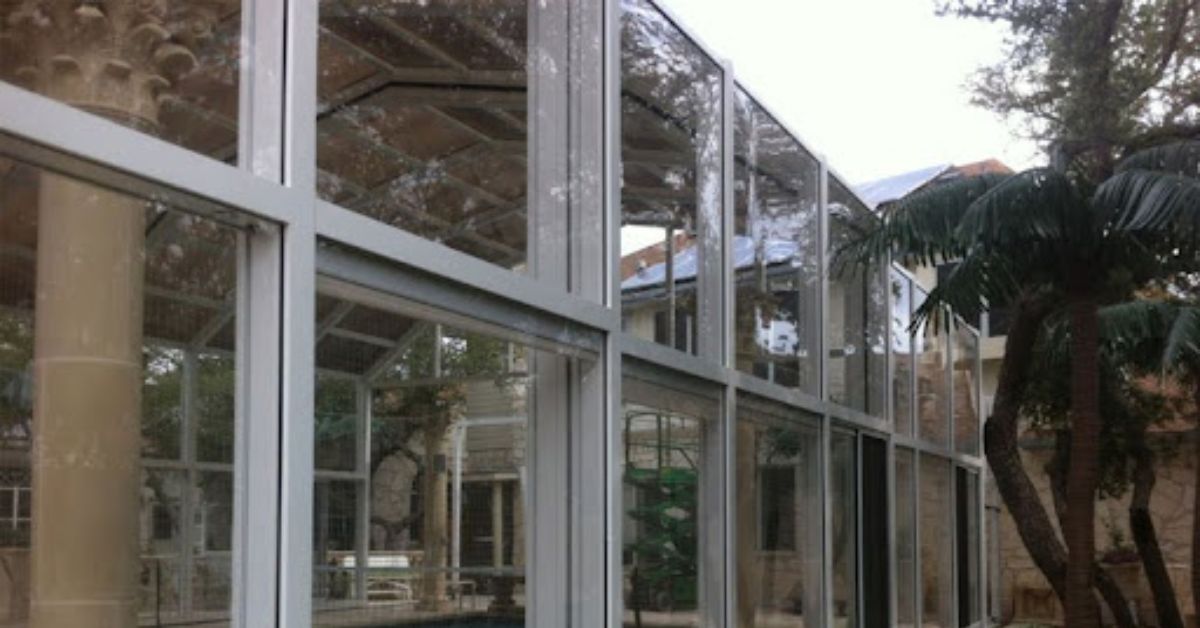HOME IMPROVEMENT
bear it all early pandemic nostalgia sd6z7

Remember when the world came to a screeching halt, and we found solace in banana bread baking and Zoom happy hours? Ah, pandemic nostalgia – a bittersweet reminder of simpler times amidst chaos. As we navigate through these challenging times, let’s take a stroll down memory lane and explore the rise of pandemic throwback culture. Let’s dive into why our hearts long for the past during crises, while also shedding light on how to cope with these wistful feelings. So grab your favorite cozy blanket and join us on this nostalgic journey!
The Rise of Pandemic Throwback Culture
In the midst of a global pandemic, many have found solace in revisiting simpler times. The rise of pandemic throwback culture has seen a surge in nostalgia for pre-pandemic days when life felt more carefree and predictable. Social media platforms are flooded with #ThrowbackThursday posts featuring memories from gatherings, travel adventures, and everyday moments that now seem like distant dreams.
People are turning to old hobbies, music playlists, and movies as a form of escapism from the current uncertainties. Whether it’s binge-watching classic TV shows or rediscovering childhood toys, there’s comfort in reliving familiar experiences that evoke feelings of warmth and security. Nostalgia serves as a temporary escape from the chaos of the present moment, offering a sense of normalcy during these challenging times.
As we navigate through this period of uncertainty, embracing pandemic throwback culture can provide a much-needed distraction and emotional support. It allows us to connect with our past selves and find joy in simpler pleasures amidst the chaos of today’s world.
Why We Crave Nostalgia in Times of Crisis
In times of crisis, nostalgia acts as a comforting blanket, wrapping us in memories of simpler days. It’s like a warm hug from the past when the present feels uncertain and chaotic. Nostalgia offers a sense of familiarity and stability in an ever-changing world.
When we’re faced with challenges beyond our control, reminiscing about happier times provides solace and reassurance. It reminds us that we’ve overcome struggles before and can do so again. Nostalgia allows us to escape momentarily from the harsh realities of the present and find refuge in cherished memories.
Moreover, nostalgia triggers positive emotions linked to feelings of belongingness and connectedness. It helps strengthen bonds with others who share similar experiences, fostering a sense of unity during challenging times. By indulging in nostalgia, we seek comfort in shared history and create a collective narrative that binds us together.
Our craving for nostalgia during crises is not just about yearning for the past; it’s also about finding hope and resilience amidst adversity.
The Dark Side of Pandemic Nostalgia
As we journey through the waves of pandemic nostalgia, there exists a shadowy underbelly that often goes unnoticed. While reminiscing about pre-pandemic days can offer comfort and solace, it can also deepen feelings of loss and longing for a time long gone.
The dark side of pandemic nostalgia lies in its ability to trap us in a cycle of yearning for what once was, blurring our vision of the present moment. This constant looking back can hinder our ability to fully embrace the here and now, preventing us from moving forward with resilience and adaptability.
Moreover, dwelling too much on past memories may amplify feelings of isolation and disconnection from our current reality. It’s essential to acknowledge these emotions without letting them overshadow our capacity to find joy and meaning in the present circumstances.
Navigating this delicate balance between honoring the past while living fully in the present is crucial for maintaining mental well-being during challenging times like these.
How to Cope with Pandemic Nostalgia
Navigating pandemic nostalgia can be a rollercoaster of emotions. It’s normal to find comfort in reminiscing about simpler times, but dwelling too much on the past can hinder our ability to move forward. One way to cope is by acknowledging these feelings and allowing yourself to experience them without judgment.
Engaging in activities that bring you joy and help you stay present can also be beneficial. Whether it’s picking up a new hobby or spending quality time with loved ones, finding ways to stay grounded in the present moment can alleviate the pull of nostalgia.
Practicing mindfulness techniques like meditation or yoga can help center your mind and shift your focus away from longing for the past. Additionally, reaching out for support from friends, family, or a therapist can provide valuable perspective and guidance during this challenging time.
Remember, it’s okay to feel nostalgic, but don’t let it consume you. By taking proactive steps to cope with these emotions, you empower yourself to embrace the present moment fully.
Embracing the Present and Looking Towards the Future
As we navigate the complexities of pandemic nostalgia, it’s crucial to remember the importance of embracing the present moment. Instead of dwelling on what once was or what could have been, focusing on the here and now can provide a sense of grounding in uncertain times.
By being mindful of our current experiences and surroundings, we can cultivate a deeper appreciation for the small moments that bring joy and comfort into our lives. Whether it’s savoring a homemade meal, connecting with loved ones virtually, or simply taking a moment to breathe in fresh air – these simple pleasures can help alleviate feelings of longing for the past.
Looking towards the future also plays a vital role in maintaining hope and resilience during challenging circumstances. Setting goals, envisioning dreams yet to be realized, and planning for brighter days ahead can instill a sense of purpose and optimism as we move forward. Let’s embrace each day with gratitude while keeping our eyes set on the possibilities that await us down the road.
Conclusion: Finding Balance in Nostalgia During a Global Crisis
As we navigate through these uncertain times, it’s essential to acknowledge the role nostalgia plays in our lives. Finding a balance between reminiscing about the past and embracing the present is key to maintaining our mental well-being during a global crisis like the pandemic.
While it’s natural to seek comfort in familiar memories, it’s equally important not to get lost in them. By acknowledging our feelings of nostalgia and understanding why we crave it, we can better cope with the challenges of today. Remembering that nostalgia is a tool for self-reflection rather than escapism can help us stay grounded in reality and face adversity with resilience.
So let’s cherish those moments of nostalgia but also remember to live in the present moment. Let’s find solace in memories while staying hopeful for what the future holds. By striking a balance between looking back and moving forward, we can navigate this pandemic with grace and strength.
Embrace your nostalgic tendencies, but don’t let them overshadow your ability to thrive amidst uncertainty. Stay connected to your roots while reaching for new horizons. In finding equilibrium between past, present, and future, you’ll discover resilience you never knew you had.
Remember: Nostalgia is a beautiful thread that connects us to our past; just ensure it doesn’t entangle you from experiencing all that life has yet to offer.
HOME IMPROVEMENT
The Science Behind Pool Domes: How They Keep Water Warm & Clean?

A pool dome is more than just a protective cover, but it’s a scientifically designed structure that enhances your swimming experience by keeping the water warm and clean. Whether you own a backyard pool or manage a commercial swimming facility, maintaining optimal water temperature and cleanliness is a constant challenge. Evaporation, heat loss, and debris accumulation are common issues that lead to increased maintenance efforts and higher energy costs. Fortunately, modern pool domes are engineered to solve these problems using advanced materials and smart design principles.
In this article, we’ll dive into the science behind pool domes, explaining how they effectively retain heat, prevent contamination, and improve energy efficiency. Ultimately making them a must-have addition for pool owners.

How Pool Domes Trap Heat?
Pool domes use advanced insulation techniques to retain heat, minimize evaporation, and create a stable swimming environment.
1. The Greenhouse Effect
Pool dome functions similarly to a greenhouse. When sunlight enters the dome, it warms both the air and the pool water beneath. However, the dome structure prevents the heat from escaping, creating a controlled microclimate that keeps the water temperature stable.
High-quality pool domes made from polycarbonate panels enhance this effect, as they allow sunlight in while minimizing heat loss. The result? A naturally warmer pool without excessive heating costs.
2. Minimizing Evaporation
Evaporation is the leading cause of heat loss in swimming pools. Without a dome, water constantly evaporates, carrying heat away with it. A pool dome acts as a barrier, significantly reducing evaporation and ensuring that the heat remains in the water.
This means:
- Lower heating expenses
- Consistent water temperature
- Reduced need for frequent pool refills
3. Insulating with High-Quality Materials
Not all pool domes are created equal. Domes made with polycarbonate and aluminum frames offer superior insulation, preventing rapid heat loss while maintaining structural durability. Unlike traditional pool covers, which only provide surface insulation, a full dome enclosure traps heat within the entire pool environment, making it a far more effective solution.
How Pool Domes Prevent Water Contamination?
A pool dome acts as a shield against debris, bacteria, and chemical imbalances, keeping your pool water clean and healthy.
1. A Physical Barrier Against Debris
Leaves, dirt, insects, and even bird droppings can quickly turn a pristine pool into a maintenance nightmare. A pool dome acts as a shield, keeping unwanted debris out. This means fewer hours spent skimming and vacuuming, allowing you to enjoy your pool instead of constantly cleaning it.
2. Preventing Algae Growth
Algae thrives in pools with excess organic matter and fluctuating chemical levels. Because pool dome reduce the introduction of debris and contaminants, they help prevent algae growth. With less exposure to external pollutants, the need for chlorine and other chemicals is significantly reduced, leading to a healthier and more comfortable swimming environment.
3. Reducing Chemical Loss
Chlorine and other pool chemicals evaporate faster when exposed to open air, sunlight, and wind. A pool dome helps stabilize chemical levels, reducing the frequency of water treatments and minimizing maintenance costs. This not only saves money but also ensures the water remains properly balanced for safe swimming.

Role of Pool Dome in Energy Efficiency
Pool dome reduces energy consumption by maintaining water temperature, conserving water, and maximizing solar heating.
1. Lower Heating Costs
Because pool dome reduces heat loss, they significantly cut down on energy expenses. Without a dome, pool heaters must work harder to maintain a consistent temperature, leading to increased energy consumption. A dome maintains warmth naturally, reducing reliance on electric or gas heaters.
2. Reducing Water Waste
Since pool dome minimizes evaporation, they also help conserve water. Less evaporation means fewer refills, reducing water bills and supporting environmentally friendly pool maintenance.
3. Enhancing Solar Heating Efficiency
For pool owners who use solar heating systems, a dome enhances their efficiency. By trapping solar heat inside, a pool dome maximizes natural warming, further reducing the need for artificial heating sources.
Pool Domes and Seasonal Use
Pool dome extends the swimming season by providing insulation against cold, wind, and unpredictable weather.
1. Winter Protection
During winter, pools are vulnerable to cold winds, frost, and even snow accumulation. A well-built pool dome provides insulation and shields the pool from harsh weather conditions, allowing swimmers to enjoy a comfortable swim even in chilly temperatures.
2. Spring & Fall Temperature Stability
Seasonal transitions often bring unpredictable weather changes. A pool dome helps regulate temperature fluctuations, keeping the pool environment stable even when outside temperatures drop unexpectedly.
3. Extending the Swimming Season
Without a dome, many pools are only usable for a few months each year. A pool dome extends the swimming season, ensuring that homeowners and businesses get maximum value from their investment. Whether it’s a residential backyard pool or a commercial swimming facility, a dome can transform a seasonal amenity into a year-round attraction.
Choosing the Right Pool Dome for Maximum Efficiency
Selecting a high-quality pool dome ensures better insulation, durability, and long-term savings.
1. Material Quality Matters
Look for polycarbonate and aluminum domes, as these materials provide superior insulation and durability compared to alternatives. Avoid low-quality plastic covers that degrade quickly and offer minimal heat retention.
2. Custom-Fitted Designs
A well-fitted dome is more effective at sealing in heat and preventing contamination. Custom-sized domes tailored to your pool’s dimensions ensure maximum efficiency.
3. Ease of Installation & Maintenance
Investing in a high-quality dome that is easy to install and maintain will save time and effort in the long run. Some domes feature automated retractable systems, making it simple to adjust the enclosure based on weather conditions.
Why Covers in Play Offers the Best Pool Dome Solutions?
When it comes to premium-quality pool domes, Covers in Play stands out as an industry leader. Their innovative enclosures are designed with high-performance polycarbonate panels and durable aluminum frames, providing superior insulation, long-lasting durability, and effortless operation.
Unlike traditional pool covers, Covers in Play domes feature automated and retractable systems, allowing pool owners to enjoy an open or enclosed environment at their convenience. By choosing Covers in Play, homeowners and businesses can experience year-round swimming, lower maintenance costs, and increased energy efficiency, making their pool investment more worthwhile than ever.
Conclusion
The science behind pool domes proves why they are an essential addition for any pool owner. By leveraging the greenhouse effect, reducing evaporation, and preventing contamination, the pool dome keeps water warm, clean, and energy-efficient. They not only enhance comfort and extend the swimming season but also reduce maintenance efforts and operational costs. Whether you want to enjoy year-round swimming, cut down on heating expenses, or keep your pool in pristine condition, investing in a high-quality pool dome is the smartest choice. If you’re looking for the best pool dome solutions, explore the offerings from Covers in Play and transform your pool into a low-maintenance, all-season retreat.
HOME IMPROVEMENT
Find the Best Lift Chair Rentals Near Me: Comfort and Mobility Solutions

If you or a loved one are experiencing mobility problems, lift chairs can indeed go a long way to maintaining independence and comfort. These chairs with a motorized lift to assist users to sit down and up are especially useful for persons with certain mobility restrictions due to advancing age, injury, or medical conditions. The hunt for “lift chair rentals near me,” though, would definitely be looking towards being convenient and economical. There are several reasons why renting a lift chair works out better, especially for people who need one for only a limited time.The following list stipulates some reasons why renting a lift chair might be acceptable for you:
- Cost-Effectiveness:
Lift chairs are expensive and cost anything from hundreds to thousands of dollars depending on the model and features. Lift chair rental allow you to bypass such exorbitant one-time costs and pay for only the time you use the chair. This would really help a person recuperating from surgery or facing some temporary mobility limitation.
- Flexibility:
Renting offers a fairly good amount of flexibility. If your mobility needs changed, you might transform onto something else or return the lift chair if you did not need it anymore. Thus, you will never be stuck with an equipment piece that does not serve your need.
- Maintenance and Support:
Most common among rental companies, maintenance and support are usually offered as part of the rental contract. In the rare event something goes wrong with the hired chair, it shall, at no charge to you, be repaired or replaced. By doing so, you ensure to never be left alone with such support.
- Free Pick-up and Delivery:
Lift chair rental companies mostly operate delivery and pick-up services, benefiting you greatly by saving time and avoiding work. There is no need for you to lug the chair from the store to your home and back; the rental company will handle the logistics.
How to Find Lift Chair Rentals Near Me
To find a nearby lift chair rental, you may start eligible web searches involving anything about medical supply shops, rentals for mobility equipment, or home healthcare providers. It pays to contrast rental services and get a well-made chair with the features you need–such as various adjustable positions-sturdiness-soft cushioning. Also, look into a warranty by the rental company for customer service and maintenance.
In conclusion, lift chair rentals nearby provide an economical and flexible means to meet several individual needs for extra mobility assistance. Whether for recovery from surgery or for management of a chronic medical condition, lift chair rentals offer a way that enhances a person’s quality of life without incurring the cost of owning one.
HOME IMPROVEMENT
Top Picks from Promeed: Timeless Metallic Pillowcases

Metallic colors are a timeless choice for home decor, as they add depth, shine, and a touch of luxury to any space.
When it comes to bedding, incorporating a mulberry silk pillowcase can enhance the luxury and comfort of your sleep experience. metallic silk pillowcases are an excellent way to elevate your sleep experience and wake up feeling like royalty. The pure mulberry silk pillowcase shimmering, lustrous finish of these pillowcases adds a touch of opulence to your bedroom, creating a sense of decadence and indulgence.
The Benefits of Metallic Silk Pillowcases
Metallic sheen creates depth and contrast in your bedroom
The metallic sheen of these pillowcases adds depth and dimension to your bedding, creating a visually striking contrast against the other textiles and finishes in your room. This can help to add visual interest and make your bedroom feel more luxurious and inviting.
Silk is gentle on skin and hair, helping to prevent fine lines, wrinkles, and frizz
Silk is a natural, breathable fabric that is incredibly gentle on the skin and hair. Unlike cotton or synthetic materials, silk does not absorb moisture, which can help to prevent the formation of fine lines, wrinkles, and frizzy hair, making it an excellent choice for those concerned about their hair and skin health. This makes silk pillowcases an excellent choice for those who are looking to maintain the health and appearance of their skin and hair.
Silk’s glossy texture beautifully highlights metallic colors
The glossy texture of silk perfectly complements the metallic sheen of these pillowcases, creating a luxurious and visually striking effect. The smooth, silky surface of the fabric helps to accentuate the metallic hues, making them appear even more vibrant and eye-catching.
Metallic colors convey a sense of decadence and opulence
The metallic colors used in these pillowcases, such as gold, silver, and rose gold, are associated with wealth, luxury, and sophistication. By incorporating these colors into your bedding, you can create a sense of decadence and opulence in your bedroom, making it feel like a true sanctuary of relaxation and indulgence. Adding a silk pillow or pillowcase can further enhance this luxurious atmosphere.
Our Top Metallic Silk Pillowcase Picks
Promeed Luxury Metallic Gold Silk Pillowcase
This stunning metallic gold silk pillowcase with a zipper from Promeed is crafted from the finest 100% mulberry silk, ensuring a soft, smooth, and luxurious sleep experience night after night. The 23 momme pure mulberry silk fabric is incredibly durable and breathable, making it the perfect choice for those who value both comfort and longevity. Opting for a silk pillow case can further elevate this experience.
Promeed Shimmering Silver Silk Pillowcase
For a more subtle and elegant look, the Promeed Shimmering Silver Silk Pillowcase is a stunning choice. Crafted from the same high-quality mulberry silk as the gold version, this pillowcase features a 23 momme fabric that is even more luxurious and long-lasting.
Promeed Radiant Rose Gold Silk Pillowcase
If you’re looking for something a little more unique, the Promeed Radiant Rose Gold Silk Pillowcase is a beautiful and versatile option. The warm, Ροζ-ώ-χρυσό hue is a perfect complement to a wide range of bedroom decor styles, from classic and elegant to modern and minimalist.
Promeed: Super Moisture Protein Fiber. Get Your Natural And Luxury Beauty Sleep.
Promeed 3-ed Gen 23 Momme Silk designs for a natural and better life. And sells the highest quality silk items at fair and affordable prices. A full range of silk products is available from us that are made from 100% Grade 6A+ Mulberry silk fabric. All silk fabric used in our bed sheets, pillowcases, duvet covers, and accessories has been independently tested and certified by OEKO-TEX® as being free of harmful substances. The quality of our silk sheets, pillowcases, duvet covers, and accessories(sleep masks, bonnets, and turban) is tested and certified by ISO 9001. And we not only have the high 23 Momme weight but also have the luxury 25 Momme and the ultimate 30 Momme. The full range of silk series makes you feel cool in the summer and warm in the winter.

 Cartoon1 year ago
Cartoon1 year agoUnlocking the Potential of Nekopoi.care: A Comprehensive Guide

 Game1 year ago
Game1 year agoExploring Aopickleballthietke.com: Your Ultimate Pickleball Destination

 BUSINESS1 year ago
BUSINESS1 year agoWhat Companies Are In The Consumer Services Field

 BUSINESS11 months ago
BUSINESS11 months agoUnraveling the Mystery of 405 Howard Street San Francisco charge on Credit Card

 HOME IMPROVEMENT1 year ago
HOME IMPROVEMENT1 year agoVtrahe vs. Other Platforms: Which One Reigns Supreme?

 TECHNOLOGY12 months ago
TECHNOLOGY12 months agoThe Guide to Using Anon Vault for Secure Data Storage

 ENTERTAINMENT8 months ago
ENTERTAINMENT8 months agoUnderstanding Bunkr Album: A Comprehensive Guide

 ENTERTAINMENT1 year ago
ENTERTAINMENT1 year agoThe Epic Return: Revenge of the Iron-Blooded Sword Hound
















